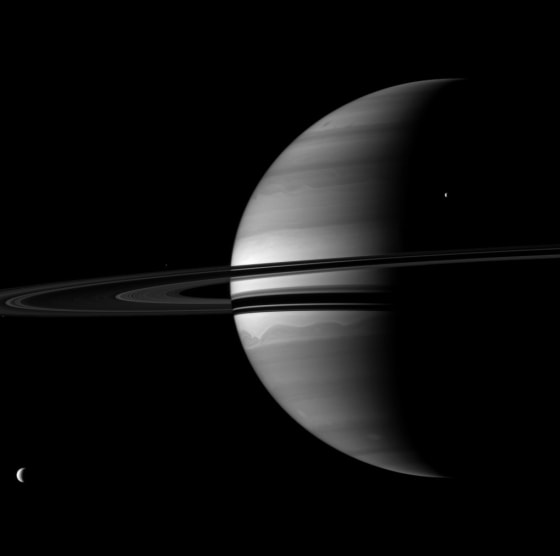Saturn's 62 moons range from overgrown rocks that are less than a half-mile wide to giant Titan, which is bigger than the planet Mercury. These pictures from the Cassini orbiter show off two "quartets" of moons against the backdrop of Saturn's rings. But you have to look really, really close to see the smallest members of each group. The first picture, taken on July 17 and released today, features Titan in the lower left corner and the icy moon Tethys toward the upper right. So where are the other moons in the foursome? Pandora, a 50-mile-wide "shepherd" moon that helps keep Saturn's F-ring in line, is on the very left edge of the image. Epimetheus, which is 70 miles across, is above the rings, near the middle left of the image. But they're mere specks in this picture, which was taken from a distance of 1.6 million miles. You'll have a better chance of seeing them in this enlarged view. Epimetheus is easier to spot in the second Cassini image, which was taken on July 27 from a distance of 746,000 miles. It's on the far left. The other moons, moving from left to right, are Janus (111 miles across), Prometheus (53 miles across) and Atlas (19 miles across). Epimetheus and Janus make a matched set, because they share an orbit around Saturn but manage to stay out of each other's way. The odd couple's relationship is explained in this NASA video. Check out this slideshow for more of Cassini's greatest hits. For more great images from Earth and beyond, explore our Photoblog. You can join the Cosmic Log corps by signing up as my Facebook friend or hooking up on Twitter with @b0yle. And if you really want to be friendly, ask me about "The Case for Pluto."
Saturn's moons team up
